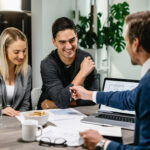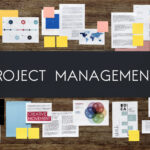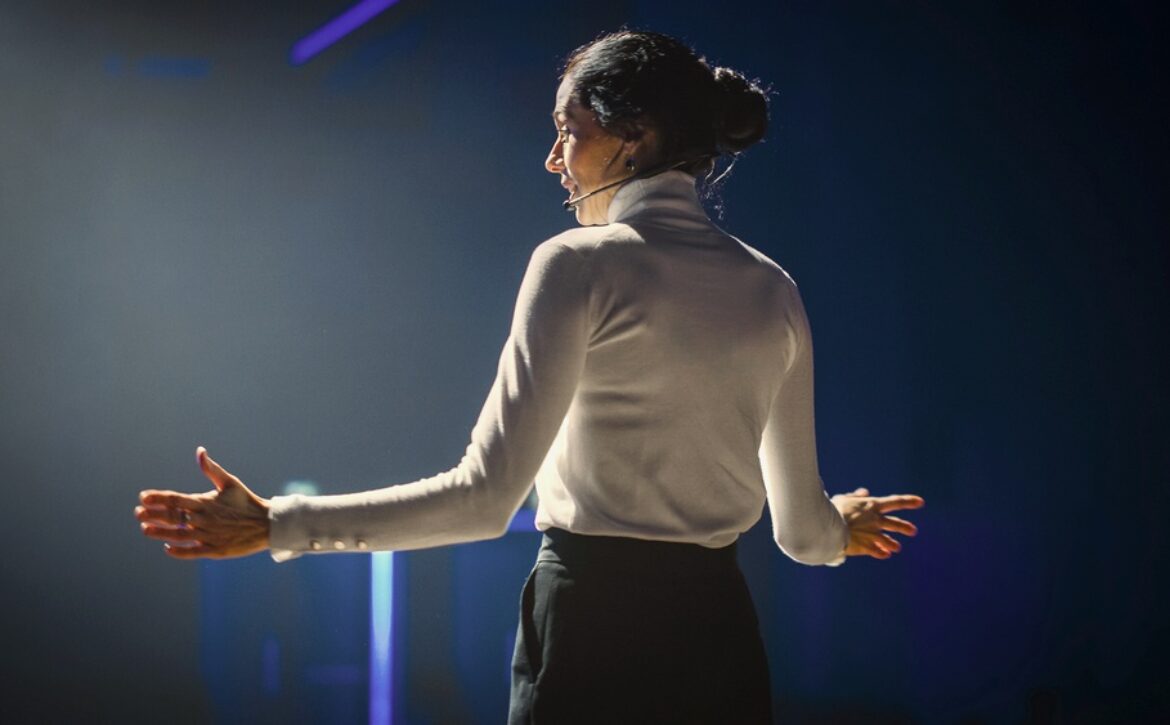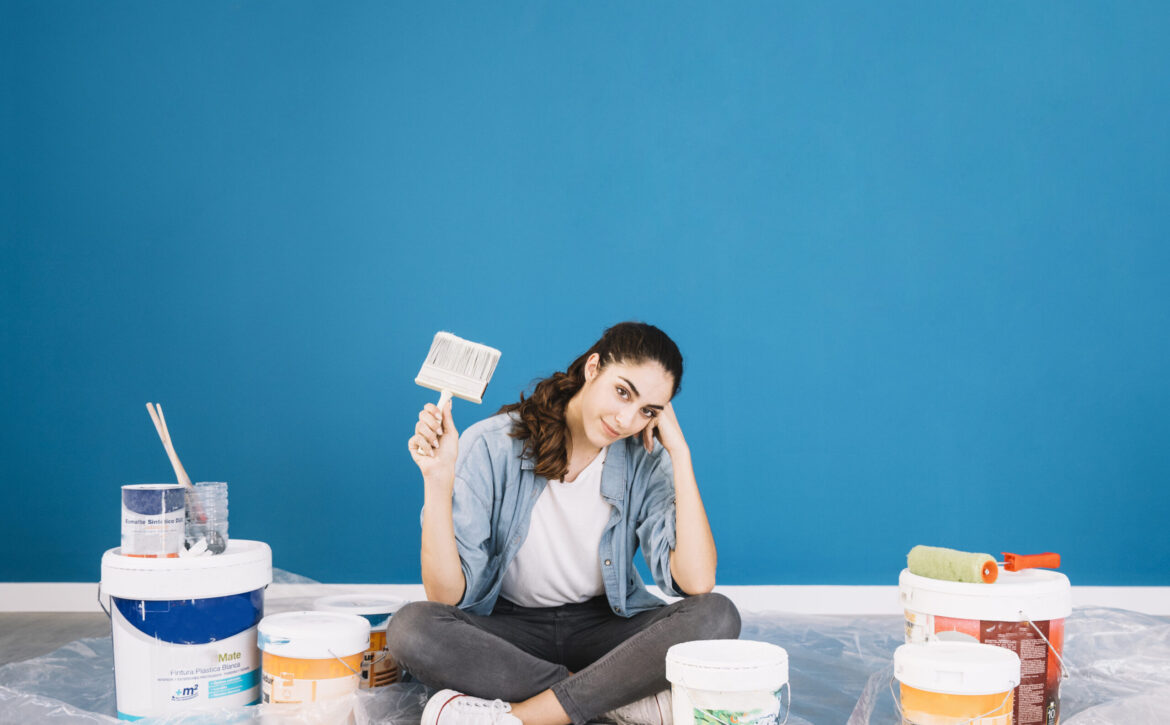
How to Become a Painting And Decorating Expert: Top Tips
Becoming a painter and decorator involves skill and creativity. You need training and practice.
This profession lets you transform spaces and bring visions to life. It can be a rewarding career for those who love working with colors and designs. Understanding the basics is crucial for success. In the world of painting and decorating, every project is a unique challenge.
You get to combine technical skills with artistic flair. Whether it’s refreshing a room or designing a new look, your work creates impact. Aspiring painters and decorators should focus on learning techniques, materials, and safety practices. This field offers opportunities for growth and specialization. From residential interiors to commercial spaces, your skills can be applied in various settings. As you develop your craft, you can build a reputation for quality and style. It’s a career that invites creativity and precision, making every job a new adventure.

Path To Becoming A Painter
Becoming a painter and decorator is a rewarding career choice. It combines creativity with skill. This path offers opportunities to transform spaces and bring ideas to life. Whether you’re interested in home improvement or large commercial projects, the journey to becoming a painter is exciting. It requires dedication and a willingness to learn. Below, we’ll explore the essential skills and training options needed to succeed in this field.
Essential Skills
To excel in painting and decorating, acquiring a set of essential skills is crucial. These skills ensure you can deliver high-quality results and meet client expectations. Here are some key skills every painter should master:
- Painting Techniques: Mastering different techniques is fundamental. Techniques include brushwork, rolling, and spraying. Each technique suits different surfaces and finishes.
- Wall Preparation: Preparing walls is crucial for a smooth finish. This involves cleaning, sanding, and priming surfaces before applying paint.
- Color Theory: Understanding color theory helps in choosing the right color schemes. It involves knowledge of color mixing and how colors affect mood and space.
- Interior Design: A basic understanding of interior design can enhance your decorating skills. It helps in aligning paint choices with overall design themes.
- Trade Skills: Skills such as measuring and cutting are necessary. They ensure precision in paint application and material usage.
Training Options
There are various training options available for aspiring painters and decorators. These options cater to different learning preferences and career goals:
- Vocational Training: Vocational schools offer specialized programs. These programs focus on practical skills and hands-on experience.
- Certification Programs: Certification can boost credibility. It often includes courses on decorating styles and advanced painting techniques.
- Apprenticeships: An apprenticeship provides real-world experience. Working alongside experienced painters helps in gaining practical knowledge.
- Online Courses: Online platforms offer flexibility. They cover topics such as color theory and interior design at your own pace.
Choosing the right training path depends on your career goals and learning style. Whether you opt for vocational training or hands-on apprenticeships, each path provides valuable skills for a successful career in painting and decorating.
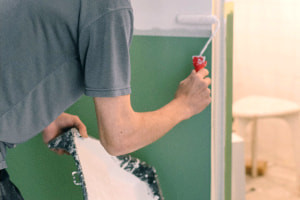
Choosing Your Niche
Choosing your niche is a crucial step in the journey of becoming a painting and decorating professional. It defines the type of projects you’ll undertake and the skills you’ll develop. Whether your interest lies in Residential Decorating or Commercial Painting, understanding your niche helps you focus your efforts and market yourself effectively. Each niche offers unique opportunities and challenges, allowing you to tailor your services to meet specific client needs.
Residential Vs. Commercial
Deciding between Residential Decorating and Commercial Painting shapes your career path significantly. Residential Decorating involves working in homes, transforming living spaces with personalized touches. Clients often seek comfort, style, and functionality. Key aspects include:
- Interior Design: Creating harmonious living spaces that reflect personal tastes.
- Wall Preparation: Ensuring smooth surfaces for flawless paint application.
- Color Theory: Advising clients on color combinations to enhance mood and aesthetics.
In contrast, Commercial Painting focuses on larger-scale projects such as offices, retail spaces, and industrial sites. This niche demands efficiency and durability. Essential elements include:
- Surface Treatment: Applying paints and coatings for long-lasting protection.
- Paint Application Methods: Using techniques that ensure even coverage on large surfaces.
- Home Improvement: Enhancing functionality and appearance in commercial settings.
Below is a comparison table for quick reference:
| Aspect | Residential Decorating | Commercial Painting |
|---|---|---|
| Project Size | Small to Medium | Large |
| Focus | Personalized Design | Durability & Efficiency |
| Client Type | Homeowners | Businesses |
Specialty Techniques
Specialty Techniques can set you apart from other painters and decorators. These techniques involve unique methods and artistic finishes that enhance any space. Consider incorporating:
- Artistic Finishes: Faux finishes, murals, and textured walls add character and depth.
- Advanced Painting Techniques: Sponging, rag rolling, and stenciling offer creative flair.
- Surface Treatment: Prepping surfaces to achieve smooth, professional outcomes.
Mastering Painting Techniques requires practice and attention to detail. Here are some steps to excel:
- Study Color Theory to understand the impact of different colors.
- Experiment with various Paint Application Methods for different effects.
- Focus on Wall Preparation for perfect finishes.
Specialty Techniques demand creativity and patience. They offer opportunities to showcase your talent and provide clients with unique solutions. Whether it’s Residential Decorating or Commercial Painting, these techniques add significant value to your services.
Tools Of The Trade
Becoming a skilled painter and decorator involves more than just applying paint. The right tools can make a significant difference in the quality of your work. Whether you’re diving into DIY home improvement projects or starting a career in professional painting services, understanding the tools of the trade is crucial. From basic tools to advanced equipment, each plays a pivotal role in transforming spaces. Let’s explore the essentials that will help you excel in painting techniques and decorating styles.
Basic Tools
Starting with the basics is essential for any aspiring painter or decorator. These tools form the foundation of your craft and aid in effective paint application and surface preparation. Here are some fundamental items:
- Brush Types: Different brushes serve various functions. Flat brushes are great for large surfaces, while angled brushes help with edges and corners.
- Rollers: Ideal for covering large wall areas quickly. Choose different nap lengths depending on the wall texture.
- Paint Trays: Essential for holding paint and evenly loading your roller or brush.
- Drop Cloths: Protect floors and furniture from spills and splatters.
- Painter’s Tape: Helps create clean lines and protects surfaces that should not be painted.
Having these basic tools will set you up for success in both DIY projects and when offering professional painting services. Each tool is vital for achieving a polished finish and mastering color theory and interior design elements.
Advanced Equipment
As you grow in skill and confidence, investing in advanced equipment can elevate your work. This equipment helps in delivering more efficient and professional results. Below are some advanced tools to consider:
- Paint Sprayers: Perfect for large areas and complex surfaces, offering a smooth finish.
- Electric Sanders: Essential for surface preparation, ensuring walls are smooth and ready for paint.
- Heat Guns: Useful for removing old paint or for drying fresh paint quickly.
- Measuring Tools: Laser levels and measuring tapes ensure precision in layout and design.
- Wall Covering Tools: Specialized tools for applying wallpaper or other wall coverings.
Incorporating advanced equipment into your toolkit allows for more sophisticated decorating styles and efficient paint application. This equipment supports the execution of intricate interior design projects and enhances your ability to deliver high-quality results in various painting techniques.
Finding Clients
Starting a career in painting and decorating can be rewarding. Becoming a professional painter requires skill, creativity, and an eye for detail. Finding clients is a crucial step in building your business. The first step is getting noticed and trusted by potential clients. For this, networking and showcasing your work are key.
Networking Strategies
Networking is essential in building your painting and decorating business. Establishing client relationships can lead to referrals and repeat business. Here are effective strategies:
- Join Local Groups: Participate in community or trade groups related to painting techniques and home improvement. These groups often have events where you can meet potential clients.
- Attend Workshops: Engage in workshops focused on interior design, artistry in painting, or color theory. They offer opportunities to connect with others in the industry.
- Social Media: Utilize platforms to showcase your work and connect with home decor enthusiasts. Share tips on surface preparation and painting techniques to attract followers.
Consider using a table to track your networking efforts:
| Event | Date | Contact Made | Follow-up Needed |
|---|---|---|---|
| Local Art Fair | Oct 10, 2023 | John Doe | Yes |
| Interior Design Workshop | Oct 15, 2023 | Jane Smith | No |
Building A Portfolio
A strong portfolio is your best asset. It showcases your trade skills and artistry in painting. Here’s how to build an impressive portfolio:
- Select Your Best Work: Choose projects that highlight your expertise in home decor and surface preparation.
- Include Variety: Show a range of painting techniques and styles. This demonstrates flexibility and creativity.
- Professional Presentation: Use high-quality images and neat descriptions. Explain how your color theory knowledge enhanced the project.
- Client Testimonials: Add feedback from satisfied clients. Positive reviews build trust.
Displaying your portfolio online increases visibility. Create a website or use platforms like Instagram. Regular updates keep your work fresh and engaging.
Pricing Your Services
Setting the right price for your painting and decorating services can make or break your business. The right pricing strategy attracts clients and ensures your efforts are rewarded fairly. Understanding how to price your services involves a mix of estimating costs, analyzing competition, and considering your unique skills. Whether you’re just starting as a freelance decorator or looking to refine your pricing, this guide will help you navigate the complexities of pricing. Let’s explore how to effectively estimate costs and implement competitive pricing strategies.
Estimating Costs
Accurate cost estimation is crucial for any painting and decorating project. It involves evaluating several factors to ensure profitability without compromising quality. Start by considering the direct costs:
- Materials: Paints, brushes, rollers, tapes, and other supplies. Different projects may require specialized materials, affecting costs.
- Labor: Consider the time required for surface preparation, painting techniques, and wall finishes. Labor costs should reflect expertise and efficiency.
- Overheads: Include transportation, insurance, and equipment maintenance. These are often overlooked but vital for comprehensive cost estimation.
A simple cost estimation table might look like this:
| Item | Cost |
|---|---|
| Materials | $200 |
| Labor | $300 |
| Overheads | $100 |
| Total | $600 |
Beyond direct costs, consider indirect factors like client consultation and project management. These can influence your final pricing. A well-planned estimation process supports transparent communication with clients and builds trust in your services.
Competitive Pricing
Competitive pricing helps you stand out in the painting and decorating market. Research local competitors to understand their pricing models. Consider:
- Market Rates: Analyze what other decorators charge for similar services. This provides a baseline for your pricing.
- Service Differentiation: Highlight unique skills like color theory or experience in interior design. These can justify higher prices.
- Package Deals: Offer bundled services, such as home improvement and painting, to add value and attract clients.
Consider a simple comparison chart to evaluate your pricing:
| Competitor | Average Price |
|---|---|
| Competitor A | $500 |
| Competitor B | $550 |
| Your Price | $600 |
Beyond pricing, focus on business marketing strategies to enhance visibility. Highlight expertise in painting techniques or surface preparation. Use this to build a strong reputation. Competitive pricing isn’t just about matching competitors. It’s about showcasing what makes your services unique and valuable.

Marketing Your Business
Starting a painting and decorating business involves creativity, skill, and a keen eye for detail. Beyond mastering painting techniques and decorating styles, marketing your business is crucial for success. Connecting with potential clients and showcasing your expertise in exterior painting, interior design, and home improvement requires strategic advertising methods. Here, we explore effective ways to market your painting and decorating business.
Online Presence
Building a strong online presence is essential for reaching a wide audience. Potential customers often search for professional painters online, making it crucial to optimize your digital footprint. Here are a few strategies to enhance your online presence:
- Website Development: Create a user-friendly website showcasing your services, including DIY painting tips, customer reviews, and projects related to color theory and painting techniques.
- Social Media Engagement: Utilize platforms like Instagram and Facebook to share images and videos of your work. Engage with followers by offering insights into decorating styles and home improvement ideas.
- SEO Optimization: Use keywords related to painting and decorating, such as “interior design” and “local contractors,” to improve search engine rankings.
- Blogging: Write informative blog posts on topics like exterior painting and DIY painting tips. This attracts potential clients interested in these subjects.
Investing time in your online presence can significantly boost your visibility. A well-maintained website and active social media accounts create a professional image, attracting more clients.
Local Advertising
While online presence is vital, local advertising remains an effective method to attract clients in your area. Here are some strategies to consider:
| Method | Description |
|---|---|
| Local Partnerships | Collaborate with local contractors and businesses involved in home improvement. These partnerships increase your exposure to potential clients. |
| Community Events | Participate in local fairs and events. Demonstrations of painting techniques and decorating styles attract attention and showcase your skills. |
| Print Advertising | Utilize flyers and brochures. Distribute them in strategic locations like hardware stores and community centers. |
Effective local advertising creates a strong community presence. It helps build relationships with potential clients who prefer engaging with businesses nearby.
Safety Regulations
Becoming a painting and decorating professional requires more than mastering painting techniques and understanding color theory. Safety regulations play a crucial role in ensuring the well-being of painters and decorators. Whether you’re exploring interior design or refining your decorating styles, knowing how to navigate tool safety and health regulations is essential. These guidelines are not just about protecting yourself; they are integral to professional certification and compliance standards. They help maintain a safe environment for both workers and clients, contributing to successful home improvement projects.
Personal Safety
Personal safety is at the heart of painting and decorating. It involves protecting oneself from potential hazards associated with the job. Here are some key aspects:
- Tool Safety: Proper handling of tools reduces the risk of injury. Always use equipment according to the manufacturer’s instructions.
- Protective Gear: Wearing appropriate gear such as masks, gloves, and goggles is necessary. This protects against harmful chemicals and dust.
- Surface Preparation: Ensuring surfaces are clean and stable prevents accidents. It also contributes to the quality of the finished work.
- Color Theory: Understanding color theory helps in choosing safe paints. Opt for non-toxic options that are safe for indoor use.
A table summarizing essential protective gear:
| Gear | Purpose |
|---|---|
| Masks | Protects against inhaling fumes |
| Gloves | Prevents skin contact with chemicals |
| Goggles | Shields eyes from splashes and particles |
Compliance Standards
Compliance standards ensure that painting and decorating practices adhere to health regulations and environmental compliance. These standards are essential for professional certification:
- Health Regulations: Adhering to these regulations protects workers and clients. It involves using approved materials and methods.
- Environmental Compliance: Choosing eco-friendly paints and materials reduces environmental impact. It aligns with modern decorating styles that emphasize sustainability.
- Professional Certification: Certification involves understanding and implementing compliance standards. It enhances credibility and trust with clients.
Compliance is not only about following rules; it’s about ensuring quality and safety in every project. Whether you’re focused on interior design or home improvement, compliance standards are integral to achieving professional excellence.
Continuing Education
In the world of painting and decorating, skill development is ongoing. As trends evolve, professionals must adapt to new techniques and materials. Continuing education plays a vital role in ensuring that painters and decorators remain competent and confident in their craft. It involves learning through various resources that help you stay ahead in the dynamic field of home improvement.
Workshops And Certifications
Workshops provide hands-on experience, crucial for honing artistic skills and mastering painting techniques. These interactive sessions allow you to practice new methods under expert guidance. Here are some benefits:
- Practical Learning: Gain real-world experience in paint application and wall finishes.
- Networking Opportunities: Meet fellow professional decorators to exchange ideas.
- Feedback: Receive constructive criticism to improve your Diy projects.
Certification programs validate your skills. They are essential for credibility. They ensure you meet industry standards. Consider programs that cover:
| Certification Areas | Benefits |
|---|---|
| Interior Design | Enhance understanding of aesthetics and color theory. |
| Paint Application | Learn efficient techniques for various surfaces. |
Staying Updated
Being up-to-date with industry changes keeps your skills relevant. Staying informed about the latest trends in painting techniques and interior design is crucial. Here are ways to stay updated:
- Online Courses: Access new information about advanced wall finishes and color theory.
- Trade Magazines: Read about innovations in home improvement.
- Forums and Blogs: Engage in discussions with other professional decorators.
Following industry leaders on social media can provide insights. They often share tips and trends. This helps you adapt your Diy projects to current demands. Consider subscribing to newsletters from certification programs. They often highlight breakthroughs in artistic skills and paint application.
Frequently Asked Questions
What Qualifications Do I Need To Be A Painter And Decorator?
To become a painter and decorator, no formal qualifications are needed. Apprenticeships or on-the-job training are common paths. Having basic math skills, attention to detail, and artistic flair is beneficial. Certification from a recognized body can enhance credibility and career prospects.
How Do I Start A Painting And Decorating Business?
To start a painting and decorating business, research the market and create a business plan. Register your business legally and obtain necessary licenses. Invest in quality tools and equipment. Develop a marketing strategy to attract clients. Consider offering competitive pricing and exceptional service to build a strong reputation.
Do House Painters Make Money?
Yes, house painters earn money by providing painting services for homes. Their income varies based on experience, location, and job size. Skilled painters can charge higher rates and secure more lucrative projects. Demand for painting services ensures steady work, allowing painters to maintain a reliable income.
Do You Need A License To Be A Painter?
Painters often don’t need a license for residential work. Some states or cities may require one for commercial projects. Always check local regulations to ensure compliance. Licensing may depend on the project’s scope and location.
Conclusion
Embarking on a painting and decorating journey offers rewarding experiences. Skills grow with practice, leading to beautiful transformations. Focus on quality, creativity, and customer satisfaction. Learn new techniques and stay updated on trends. Connect with other professionals for inspiration and guidance.
Build a reputation for reliability and excellence. Enjoy the process and celebrate each completed project. Your dedication and passion will set you apart. Start with small projects and gradually take on bigger challenges. The path requires patience and perseverance, but the results are fulfilling.
Embrace the opportunity to create stunning spaces and make a lasting impact.


